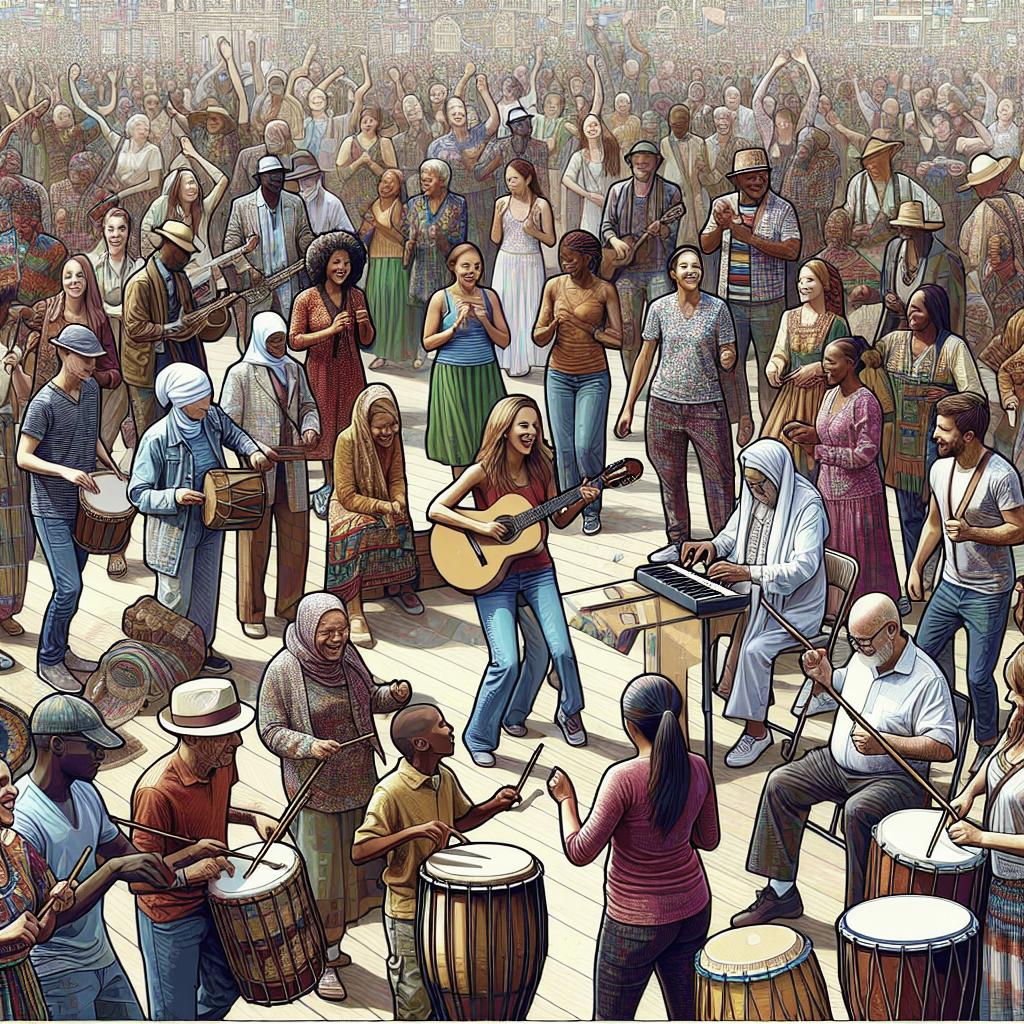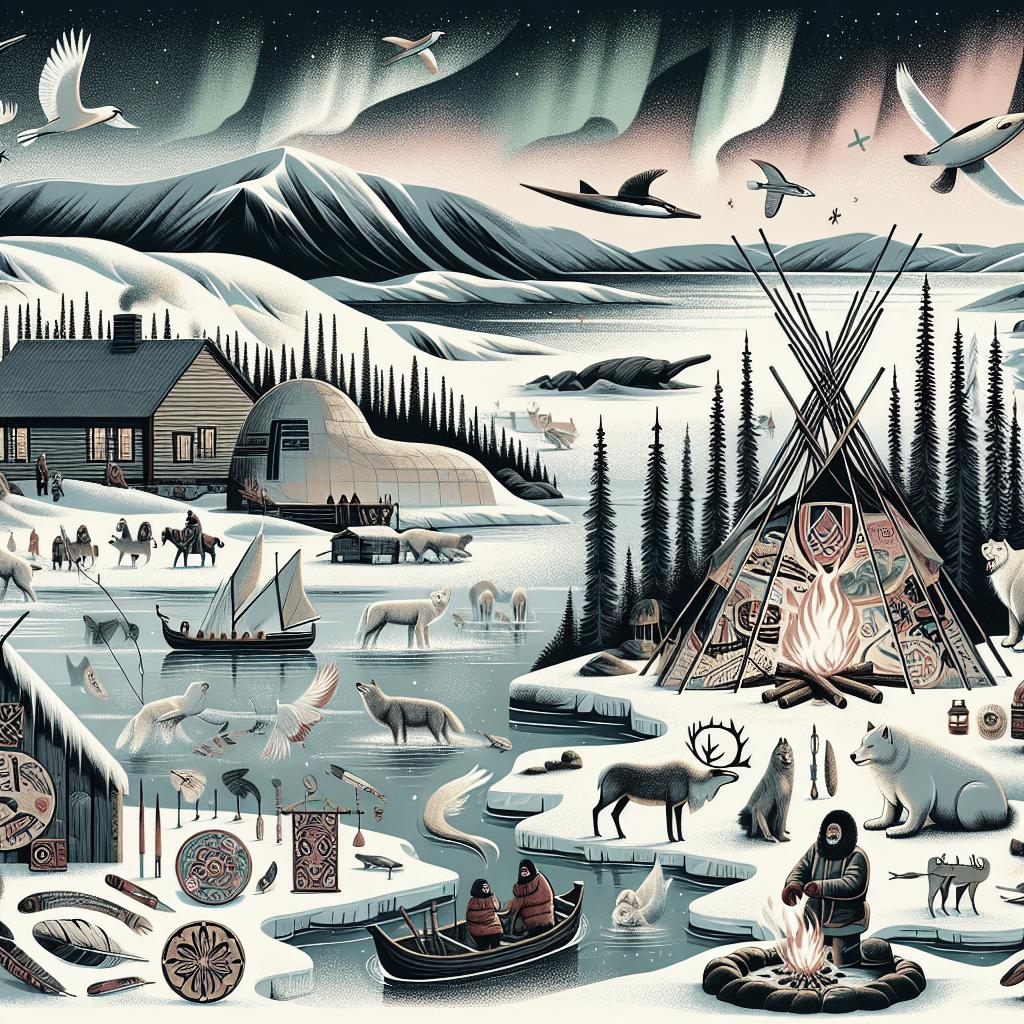“`html
Thank you for your submission
Local music and dance traditions are vibrant expressions of cultural heritage that continue to thrive across the world. This article delves into various traditional dances, showcasing their histories, evolution, and significance within communities. From the lively folk dances that mirror the history of rural life, to native dances rooted deeply in indigenous cultures, these stories highlight the profound connection between people and their art forms. The transformation of certain dances from spiritual ceremonies to community celebrations reveals the enduring influence of these practices. We’ll also explore how Canada, a mosaic of cultures, poses as a unique setting where these traditions are preserved. Collectives and performance troupes play a crucial role in maintaining these traditions, along with clubs and societies that foster communal bonds through dance. Join us as we step into the world where music and movement reflect the very essence of humanity.
Folk Dance
Folk dance is an integral part of local traditions worldwide, providing a window into the lives of ancestors and the history of communities. Rooted in the everyday experiences of agricultural and rural societies, these dances often illustrate themes of work, the changing seasons, and social gatherings. Each region boasts its own unique styles and steps, creating a rich tapestry of movements that celebrate the diversity of cultural expressions.
The significance of folk dance is not solely in its steps, but in the stories it tells and the roles it plays in preserving a culture’s identity. This genre often allowed communities to come together, transcending social barriers and serving as a key mode of teaching traditions and sharing narratives that might otherwise be lost. As societies modernize, preserving these dances becomes a testament to the resilience of cultural identity amid global shifts.
Native Dance
Native dance embodies the spiritual and cultural ethos of indigenous communities around the globe. These dances are typically rich in symbolism, often used in ceremonies, rituals, and storytelling that convey beliefs, history, and a deep connection to nature. Native dances serve as a living documentation of indigenous peoples’ struggles, joys, and profound relationship with the land.
Each native dance is unique to its culture, yet universally, these performances unite communities, affirming identities and continuity. Through rhythmic movements and traditional music, dancers embody the spirits and traditions of their ancestors. For many indigenous groups, the dance becomes a powerful tool for sustaining cultural heritage amidst changing times, often performed at festivals or sacred gatherings to pass on heritage to younger generations.
Growth From Religious Rituals
The origins of many dance traditions can be traced back to religious rituals and spiritual ceremonies. Historical accounts suggest that dance was a conduit for communication with divine entities or a method to secure bountiful harvests and communal blessings. Many traditional dances were initially based on religious teachings, with movements and music used to express reverence and spirituality.
As these rituals evolved, they slowly integrated into more secular settings while maintaining their sacred roots. This transition reflects the dynamic nature of culture and tradition, adapting while preserving core elements of its origin. Today, the hybrid forms of these dances continue to inspire performers and audiences alike, offering a glimpse into their spiritual past and their continuous evolution in contemporary society.
Survival Folk Dance in Canada
Canada presents a unique landscape for the preservation and evolution of folk dance, standing at the crossroads of numerous cultural influences. As a multicultural nation, Canada’s folk dance traditions are a mosaic, with indigenous dances coexisting alongside those brought by immigrants from Europe and Asia. These diverse traditions reflect the country’s rich cultural heritage and history.
Efforts to preserve these dances are often spearheaded by community organizations and cultural associations dedicated to maintaining their historical significance. These groups not only offer opportunities for learning and performing but also foster cross-cultural exchanges, encouraging understanding and unity within Canada’s diverse society. Such collaborations ensure that folk dance continues to thrive, bridging generations through the art of movement.
The Performance Troupe
Performance troupes play a pivotal role in the continuation and innovation of local dance traditions. These groups, comprised of committed practitioners, work tirelessly to refine and stage traditional dances, often interpreting historic styles with contemporary flair. Through public performances, they share these vibrant expressions with wider audiences, both locally and globally.
Beyond entertainment, performance troupes serve as cultural ambassadors, bridging cultural gaps through storytelling in dance. They often engage in workshops, outreach programs, and educational sessions to impart the cultural significance and intricate techniques of traditional dance forms. This engagement fosters appreciation and respect, ensuring that the legacy of these dances is both celebrated and understood.
Clubs and Societies
Clubs and societies dedicated to dance traditions are vital communal spaces where cultural practices are preserved and propagated. These organizations often operate at grassroots levels, relying on volunteer efforts and community support to sustain their activities. They provide platforms for dance enthusiasts of all ages to learn, practice, and perform, thus keeping traditions alive in everyday life.
Through regular events and festivals, these organizations cultivate a sense of belonging and pride amongst members. They are instrumental in creating a shared space where cultural heritage can be celebrated and passed down through generations. Clubs and societies bridge the gap between past and present, continually revitalizing traditional practices while fostering new interpretations that resonate with contemporary audiences.
Final Thoughts
The enduring legacy of local music and dance traditions lies in their ability to adapt and thrive amidst changing cultural landscapes. By exploring folk, native, and evolving dance forms, we gain insight into their historical roots and contemporary significance. Through diverse platforms and committed individuals, these traditions are kept alive, reflecting the shared histories that unite human communities across the globe.
| Section | Summary |
|---|---|
| Folk Dance | A celebration of rural life and cultural identity, reflecting historical community practices. |
| Native Dance | Dances that embody indigenous spirituality and cultural connections to the land. |
| Growth From Religious Rituals | Traditions originating from spiritual practices, evolving into cultural celebrations. |
| Survival Folk Dance in Canada | Canada’s multicultural landscape fosters the preservation of diverse dance traditions. |
| The Performance Troupe | Groups that stage and innovate traditional dances, serving as cultural ambassadors. |
| Clubs and Societies | Community-based organizations that preserve and celebrate dance heritage. |
“`

